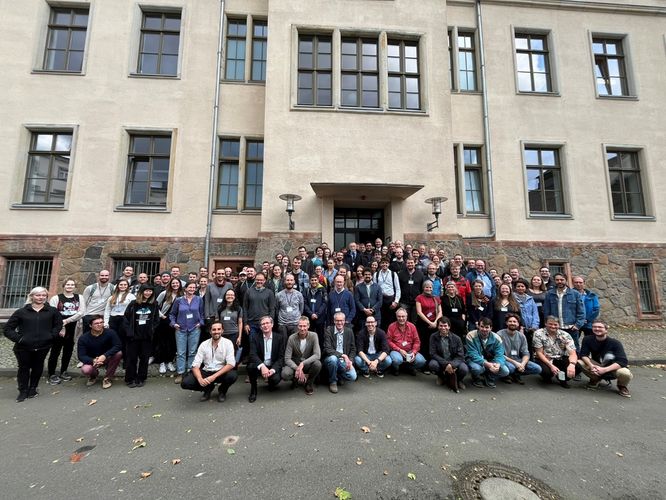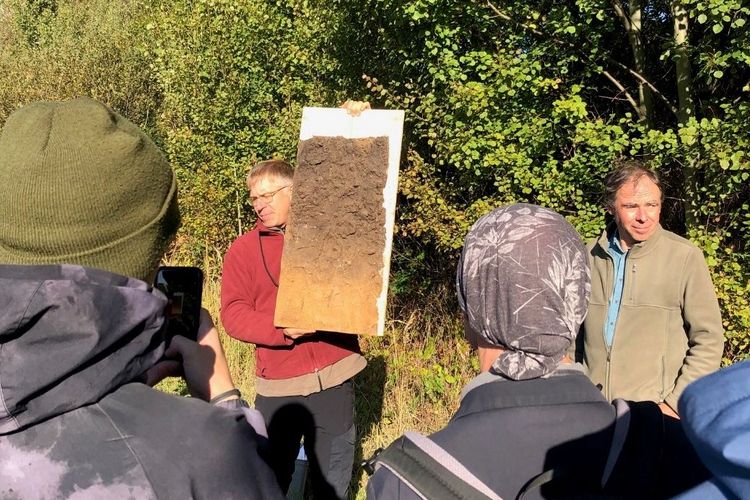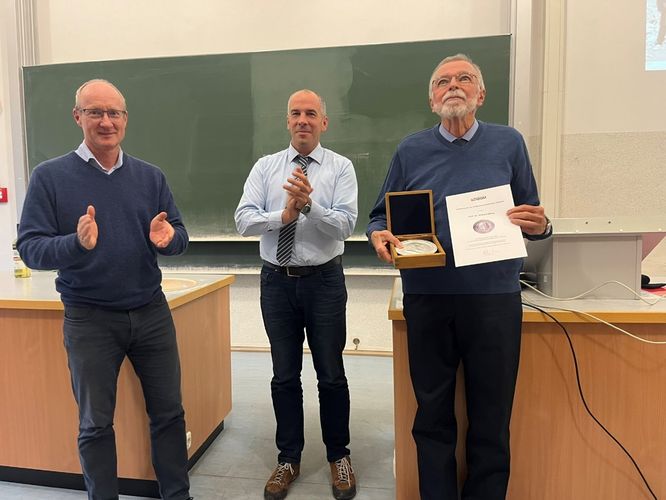The conference was opened with a speech by Prof. J.-K. Eilers, Vice-Rector of Leipzig University, along with welcoming remarks from the conference coordinators, Prof. Christoph Zielhofer and Jun.-Prof. Djamil Al-Halbouni. Prof. Zielhofer emphasized the increasing frequency and magnitude of geomorphological processes due to climate change and human impact, highlighting the critical importance of these studies in understanding how the Earth's surface is transforming.
This year's conference focused on the shifting geomorphological processes in the context of human forcing mechanisms. Talks addressed phenomena such as the thawing of permafrost, which increases the risk of landslides in high mountain regions, as well as human-induced geomorphological changes like peat subsidence in drained moorlands and subsidence caused by excessive groundwater extraction. A research focus presented at the conference was the study of medieval and early modern geomorphological dynamics in floodplains on the way to human controlled landscapes. Sessions on shifting environmental and planetary boundaries, geomorphological hazards as well as biogeomorpholocial processes were further key topics of the conference. Attendees explored cutting-edge methods in surface geophysics, remote sensing combined with AI, and interdisciplinary approaches integrating geomorphology with environmental history and archaeology.
Conference Awards
The Ferdinand von Richthofen Medal was awarded to Prof. Richard Dikau for his outstanding contributions to geomorphological research and his lasting impact on German geomorphology. Prof. Dikau’s work embodies the pioneering spirit of Ferdinand von Richthofen, who is widely regarded as the founder of modern geomorphology. Ferdinand von Richthofen held a chair position at Leipzig University from 1883 to 1886. The DGGM awarded several geomorphological studies to pronounce exceptional early career research:
PostDoc-Awards
Dr. Georg Veh (Potsdam University): Outburst floods from moraine dammed lakes detection, frequency, and hazard.PhD Awards
Dr. Alexander Bonhage (Brandenburg University of Technology Cottbus-Senftenberg): Effects of historical charcoal burning on soil landscapes in West Connecticut, USA.
Dr. Felix-Martin Hofmann (Freiburg University): Geometry, chronology, and dynamics of the Pleistocene glaciation of the Black Forest.
Dr. Stefan Haselberger (University of Vienna): Disturbance vs. stability or the quantification of biogeomorphic feedbacks in high mountain environmentsConference Oral Presentation Awards
Benedikt Müller (Universität Wien): High-accuracy landslide monitoring in densely vegetated slopes: A methodological approach using terrestrial photogrammetry and novel filtering techniques
Dr. Hanne Hendrickx (Dresden University of Technology) AI-Driven tracking on hourly monoscopic time-lapse imagery for alpine landform monitoringConference Poster Awards
Marie Kaniecki (Leipzig University): GIS-Analysis of peat-loss in the Greater Donaumoos Region – consequences from human interventions
Till Wenzel (University of Vienna): Critical Infrastructure at Risk: Analysing Geomorphic Hazards in the Wipptal, Tirol
The DGGM conference featured several social events that fostered valuable networking opportunities. The icebreaker event was held at the Institute of Geography, where attendees enjoyed organic food and drinks. The conference dinner took place at the Ratskeller, providing a relaxed atmosphere with a generous buffet, where discussions continued well into the evening.
Participants had the opportunity to visit two key geomorphological sites near Leipzig:
A: The Weiße Elster floodplain (led by Hans von Suchodoletz and Christian Tinapp), where discussions centred on floodplain development and erosion, taking into account both climate change and human settlement.
B: The Mansfelder Land (led by Djamil Al-Halbouni, Nadine Sänger and Johannes Schmidt), where the focus was on sinkholes formed by salt dissolution, historical mining activities, as well as the potential of sediment archives for reconstructing subrosion dynamics.



